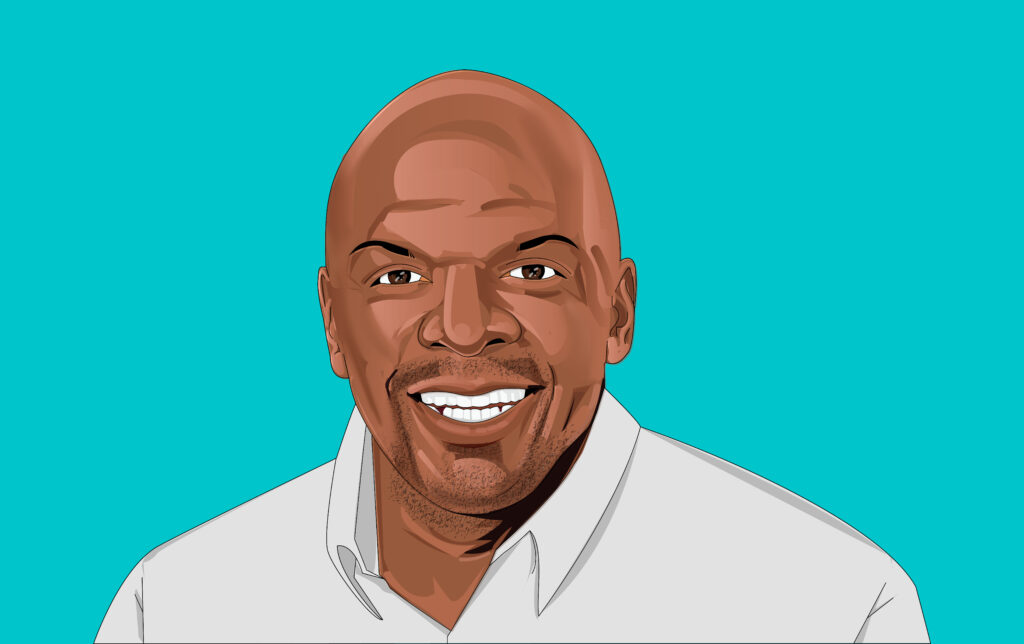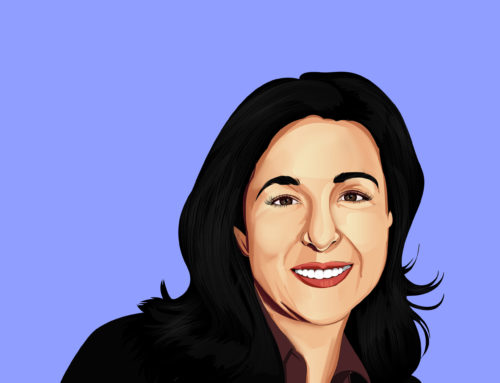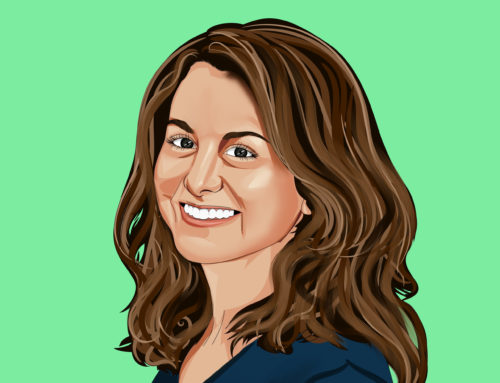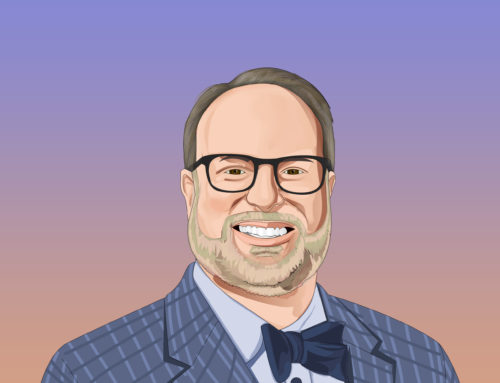Enter your information below to sign up to receive alerts on new interviews!

In this episode Talent Chronicles, Frederick Davis joins us to talk his journey through Talent Acquisition. Frederick is an expert in diversity in the recruiting process and workflow. Frederick has experience starting in retail with Starbucks Coffee Company leading to his current role as the Director of Culture and Diversity in the banking industry with WSECU. Davis highlights how to find, hire, and retain diverse talent in today’s world, both virtually and in person!
JCSI: Hi everyone, this is Bergin Sullivan with JCSI! I’m here today with Frederick Davis, joining us for an interview in our Talent Chronicles series. Thanks Fred, for being here with us.
Frederick Davis: I’m very glad to be here.
JCSI: So, you’ve been in talent acquisition for over 15 years with experience starting in retail at Starbucks Coffee Company, currently working as the Director of Culture and Diversity in the banking industry with WSECU. Could you give us a quick background of your work experiences and tell us a little bit about how you got into talent acquisition?
Frederick Davis: Well, it’s been an interesting journey. So, I thought when I finished grad school, I always thought I’d be doing diversity stuff, and I found out they do it in the K-12 system. So, I went to San Francisco state, had a great program that allowed me to combine three different disciplines.
They were Ethnic Studies, Psychology and Organization Administration. And so, my goal was to go be like a director of multicultural services in a K-12 school district. When I finished, I worked as a High School Counselor on a Mercy certification back here in the state of Colorado and had a blast doing it.
You know, I was in my early twenties, and I learned a lot from it, so I was able to apply a lot of things I learned there from a talent management perspective, as a high school counselor. You know, staying agile and flexible when people walked in your office, made a phone call, or at a virtual interaction and learning how to set standards. It doesn’t seem like it, but there’s a lot of that to a High School Counselor.
So, I did that for a while. Then I worked in Higher Ed, back in the state of Washington. I used to work at Tacoma Community College, and thought I’d be there for life. I eventually met a Recruiter in the corporate world, and they talked about signing bonuses and regular pay increases and all that kind of stuff, and I got hooked.
I had an awesome experience at Starbucks, and I was part of the diversity team, and that allowed me to start building relationships, learn more about HR, including Talent Acquisition. So, part of my responsibility was to basically cast a wider net to get the best talents and not just, you know, posting on a website and calling it a day.
Starbucks had that luxury, they were one of the few companies that did, because people from all over would come, but we had to get out there and find some passive candidates. I know you guys specialize in that. As well as how to source in different ways, we had sourcing teams on the talent acquisition team, and I just learned a lot from my experience there, from the good leadership and then was able to take that and get more involved over time.
But that’s the foundational knowledge I had, and I was able to apply that to any of the positions I was, whether it’d be in the startup world as well as where I’m currently at now.
JCSI: In terms of diversity in the recruiting process, what are the initial steps that you follow when you first set out that recruiting process, and has it changed at all from starting in Starbucks and coming to where you are now in banking?
Frederick Davis: Yeah, I really like that question that you shared with me prior to, and one of the things I thought about was a workflow chart. You know, kind of the snake looking workflow charts? So, one of the things that I think about is that there is usually about 8-10 steps in a workflow process. For recruiters, from working with a Hiring Manager to create the position and getting the funding for it, to writing the job description, to interviewing, etc.
To me, within that 9-10 step process, there’s four steps where inclusion can play a huge part of that. Inclusion should be a huge part of the position description, making sure you’re using inclusive language. If you’re going to cast a wider net to get the best talent, you want to make sure that you’re sounding inclusive in the description and not using pronouns, right? Once again, when we talk about inclusion, we’re not just talking about gender or race, we’re talking about all aspects of diversity. So, making sure that you’re using the inclusive process in the most holistic sense, and that looks at people’s experience and then quantifying it. For example, in IT, you look at certification versus degree, right?
The other part is, as I alluded to before, is the sourcing part where our position is posted so people can get eyes on it. I’m a big fan of this great representative that I worked with at one of our sites, he is at LinkedIn, Alex Mustilli, and he shared with us some different ways. For example, LinkedIn, as a platform can help us build authentic relationships with different groups within LinkedIn. I think there’s 30, some odd groups in LinkedIn that allows us to do that.
It’s important to build authentic relationships with these institutions and platforms so that you know they want something from you, and you want something from them. And more times than not it’s not going to cost a lot of money, but it’s well worth it. You don’t want to do drive by and don’t want to try to do a shotgun effect. I would pick two or three authentic organizations and build long-standing relationships with them.
The other step in the workload process to help is the interview process and making sure that even if it’s virtual that it’s inclusive, making sure if someone is visually or hearing impaired you address that. Even ask them upfront before you start your interview or when you send the invite out, right? “Are there any issues that we need to be aware of?” There are ways to do that.
You know, asking, “do you have a preferred pronoun when we talk to you during the interview process?” All of that should be asked up front.
And then two other steps are the offer and the onboarding processes. More than ever, especially as we become more virtual, you can make an offer to someone, but that doesn’t mean they’re going to show up. So, we want to make sure that the offer is inclusive. Sometimes it’s not about money. You want to make sure that the compensation package, especially if its benefits related, includes partners, and it’s sensitive to caretakers. Not only for the adults, but if they have a special needs kid, like I have.
Lastly, is onboarding, and not just a quick one- day orientation, but it’s what’s happening the first 90 days when someone comes on board your team. I put that primarily on the manager and not the L&D team in HR.
That’s up to manager to have a set of stakeholders that he, she, or they work with. As well as clarity on what the job is going to be for the next year or years, you know, all that kind of stuff.
So, to me, once again, I think job creation/posting/sourcing, interviews, offer and onboarding all should be key, inclusive parts.
JCSI: Great! I love that you narrowed it down into the four steps. My next question was going to be about screening and sourcing. So that was a perfect flow there. So, I guess not just focusing on screening and sourcing, but including the offer stage and the onboarding stage. Which of the four stages do you think, not to say it’s the most important to focus on inclusion and diversity, but what do you think is the most difficult step to focus on that? So, where you must really think outside of the box, would it be before you even start speaking to the candidate when you’re doing that sourcing or is it trying to get them, like you said to show up for the interview?
Frederick Davis: That’s a great question. I think two parts. One is you’re trying to draw people to apply, right? And you want them back on your website, right? So sometimes people get really hung up on the tool that you use whether it’s Workday, Oracle, Greenhouse, all these great platforms. But a good platform doesn’t matter if you’re process sucks. You know what I mean? So, if you have a bunch of stock images on your homepage or your careers landing page, folks are going to know. For a person of color if you’ve seen the same single stock image on six different websites it’s like: Alright, I’m good. So that’s one step and hopefully there are authentic employees that are on there, or there’s some testimonials on there that matter.
Also, if you have some ERGs or something like that to put it on there. I saw some cool best practices for someone who’s applying, they asked, “Do you want to hear from one of our employee resources groups, or would you like to hear from someone about opportunities in the city where you’re going to work?” I’ve even seen and have been seeing some institutions post an inclusive book where they talk about different diverse resources in the community where they work like churches, hair care, a place to shop, you know all these things are there. It doesn’t have to be a lot, doesn’t have to be, a local version of a Greenbook but you can provide something for someone to learn about the community where they work in.
I think the other hard part is the interview process. I always tell people don’t just put that one diversity question in there: “Tell us about a time when you helped move diversity on your team.” Right? Everyone has a version of that kind of question. You have three or four questions that talk about the extensive process of diversity. Not just about race or gender and not just using the generic term diversity. Such as: “What would you do if there was a conflict between somebody who was first-generation who was a millennial, and who was a baby boomer? How would you mediate this?” You know what I mean? Give some practical examples of stuff, not just that one generic question we’ve been seeing for twenty years.
JCSI: All right and when thinking about retaining any talent, but specifically diverse talent, how do you initially think about that and go about that? More specifically, what have you seen that has worked? That’s not worked? And your experience with that.
Frederick Davis: I had a chance to, in one of my last roles, I had two good recruiters. Well, they’re all good people and good recruiters, but one was good at engaging and building authentic relationships. His name was Dwight Beck, and he was awesome, he had eclectic life experiences that were diverse.
I don’t know if he was even aware of some of the extensive aspects of his work, but he also was able to build an automatic connection with someone and find that commonality. So, if he had to cold call somebody or find a passive candidate, he would go through this process. He would find the company, find them online, talk to the receptionist, and all of these things to just get to someone and then ask them and there’s an 80% chance that they’re going to say, “No, thank you. Leave me alone.” But there’s that 20% chance. You must be that salesperson to make sure that someone gets engaged.
And I think to do that in a culturally competent manner, when required, is needed. Some people I think are culturally competent and they aren’t even aware of it if they have to cold call or find that passive candidate. To me, cultural competence is not some cerebral academic thing.
Cultural competence is like that cool kid in high school who got along with all the cliques. Right? That’s truly all it is. And not just got along with them but was able to get them to do something together and then do something collectively as a group. That’s what a culturally competent senior leader should do. Not just get along but being able to galvanize people to act in a positive way.
That’s the cool thing that I have always loved about Talent Acquisition. And if you can do that in a short time to fill, especially because there’s so much competition out there for talent, you’ve got a gem there.
JCSI: I know you briefly mentioned like this with the LinkedIn example, but on creating or supporting the creation of communities within your company within that company culture? Specifically, groups for underrepresented employees, could be within the company or even the industry, which I guess would kind of relate to that LinkedIn example.
Frederick Davis: If I understand the question right, and I think it’s a great one, the easy answer is Employee Resource Groups, what I call ERGs. I prefer the term Business Resource Group. Part of their job by being a Business Resource Group is to help drive the business.
So, one of the things they should do is help you engage talent that align with their specific affinity group. That’s what they should be set up for. They also should help with community connections on our regional, local, or national level. They should be empowered in that capacity. And one of the things, if they’re truly empowered and not just a tool to help the business but had a group of like-minded professionals to help build a smaller version of a larger community within the organization.
So, I think sometimes people put a lot of pressure on the ERGs or BRGs, they require them to do a lot more than what they are really tasked to do. But that’s one way to do it, and I think also a mentoring program is key. When I talk about a mentoring program, it’s not a mentoring program for life. The senior leader just lines up with somebody for just nine months saying, “I’m going to show you my area of business for nine months” or “I have some competencies that you want to learn from me for nine months.” If we become buddies after that, so be it, but there should be a structured program in place. You don’t need to hire somebody or create some new platform; you can do that on an Excel spreadsheet.
I think another cool thing to do is empower and train leaders, you know, more times than not, managers and directors happen to just be the most proficient person of a given function. Like they’re the hardest working smartest person on the team so they become the manager of that team. That doesn’t necessarily mean they know how to lead or manage a team. If they have the desire to learn and grow in that capacity and in those competencies needed, there should be some training available to them and that would be key.
What I like about your question is that if you bust your butt to bring on all this great talent and you’ve done it in a time efficient manner, and then they’re gone in less than two years, you’ve lost money, right? Cause it costs a certain amount of money to bring somebody on. So, bring them on board and then try to train managers, get them connected with the community, and then I think you’re good to go. But if you don’t make any kind of overt effort, you’re wasting time and money. And one of the biggest things is that people leave organizations because of their managers, right?
JCSI: Yeah, I love that training leader’s aspect. So, in terms of your onboarding processes, what types of changes can you make, or have you made in the past to help cultivate a good relationship with new employees coming in with those older employees that have been there for longer? I know we’ve talked about the groups and things like that, but are there any other things that you like to use or that you recommend?
Frederick Davis: One of the things I always heard from one of the Business Partners or generalists was a work buddy. So, once you come on board, who are you matched up with? Once again, you are formally matched up for a certain amount of time if maybe you become true, authentic friends, that’s a whole other thing, but someone who just kind of shows you where the bathroom is, the cool places to eat, the emergency exit, you know, uh, and it’s not your boss.
You can just ask them, ” Do I empty my own trash can? Or does someone come and do that?” You know, and it’s awkward, right? You’re the new guy and you’re asking, yet your trash is overflowing or the recycle is overflowing.
Once again, it can be virtual. Even if it’s just once a week for a month or two months. Just to connect for 15 minutes to talk and now the work buddies have some things to touch on too, as they move through that stuff.
That’s a really good idea that I’ve heard as part of onboarding. And then having the manager, or director, who you report to connect on a regular basis too. In two separate sets of meetings, and then also doing it in a culturally competent manner whenever possible. Also, sometimes people like to take notes or write in a journal because they may have some ideas with a fresh set of eyes. They may have some initiatives, so they should be able to start sharing that.
JCSI: Yeah. I love that idea. So, we have ran through all our questions. Are there any final thoughts? Anything we didn’t cover? Anything else you’d like to share or touch upon?
Frederick Davis: There’s a question about what types of training methods do you find important to lead diverse teams? I remember at a place I worked at before and I was butting heads with one of the leaders of HR about unbiased training. She had this concept, this very academic version of unbiased training and how it should be implemented. And my thing is I’m not against that theory, but let’s just do a needs assessment to find out what kind of training and expected outcomes should there be for individual contributors, middle managers, and senior leaders. It shouldn’t just be a one-shot cookie cutter thing where someone comes in from local college and then leaves, right?
So, we need an actual learning journey for someone to go through. I’m a big fan of providing learning journeys that’s integrated with someone’s existing Learning cycle as they come on board regardless of the industry.
It could be done in a multiple set of ways. There could be a facilitator, there can be videos, there could be all kinds of stuff. So, I’m just a big fan of integrating inclusion in an individual contributor or manager’s learning journey. It’s not necessarily a one-shot unbiased training thing by one author. That’s somebody read or saw on Oprah 20 years ago.
The other thing I would add, there’s a difference between U.S. diversity inclusion work and global diversity inclusion work. So, just the other day I was talking with somebody about how they wanted to do something for the Hispanics in their organization.
Now they’re a global company and I reminded them the entire globe does not use the term Hispanic, that’s a U.S. term. Not everybody outside of the country uses the term African American too. Right? So, we must realize how some people choose to define themselves and include what that looks like. So, I would say once again, its people being knowledgeable, sensitive to, and aware of when we talk about U.S. diversity inclusion efforts and global inclusion efforts. And if you’re a global company with a global footprint, take that in consideration.
JCSI: Yeah, that’s a great point and I’m sure too many people think about that.
Frederick Davis: So, I hope that was helpful, you know, good info to share.
JCSI: All right, thank you so much!
Frederick Davis: Thank you so much and stay safe.
Talent Chronicles is brought to you by JCSI, an innovative recruitment consultant that delivers better hires, faster, and at less cost.




